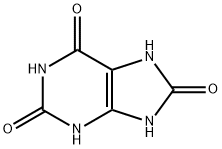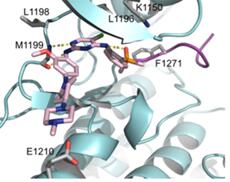Health Effects of Uric Acid Levels and Drug Therapy
Uric acid is a breakdown substance of purines which exist in body tissues and some food and drinks. Purines are a type of chemical compound in nature consisted in nucleic acids (DNA and RNA). Uric acid is created in the body via purine metabolism and circulated within the bloodstream, and it will be excreted in urine as waste. As a result, there is a certain balanced amount of uric acid in the bloodstream, which is of great importance to the functions of body.
Uric acid is composed in the form of urate of ammonia, and it is the primary constituent of the urine of birds and reptiles. Uric acid helps to keep the birds' weight down which is crucial for their flight. Due to its acidic properties, uric acid from birds does damage paints on cars. Insects produce uric acid during protein catabolism. In addition, uric acid helps to make butterflies iridescent. Its crystals also reflect the light produced in fireflies by bioluminescence.
High uric acid
The normal or reference levels of uric acid are 2.4-6.0 mg/dL for females and 3.4-7.0 mg/dL for males. However, these normal values vary from different laboratory data. Altered serum uric acid concentrations, both above and below normal levels, have been proven to be linked to some diseases. In addition, both high and low levels of uric acid increase mortality rates, showing an U-shaped association between serum uric acid levels and all-cause, cardiovascular, and cancer mortality.
According to available epidemiological data, hyperuricaemia is associated with a greater risk of target organ damage and of cardiovascular morbidity and mortality. Elevated uric acid (hyperuricemia) was reported to contribute to gout, kidney stones, hypertension, cardiovascular disease, metabolic syndrome, kidney ailments, lympho-proliferative disorders, chronic hemolytic anemias. Besides, more recent results also suggested an association between uric acid and bipolar disorder. Historically, uric acid has been considered as a marker of these disease states. Moreover, recent research results have provided evidence that uric acid may actually play a role in the development or progression of such diseases. The mechanisms between hyperuricemia and mortality can be explained by the correlation of the oxidative stress and the inflammasome. Hyperuricemia can activate the NLRP3 inflammasome and induce the production of interleukin-1Β, which in turn result in an inflammatory cascade.
The amount of urate in the blood depends on the dietary intake of purines, urate biosynthesis, and the rate of urate excretion [4]. Diets consisting of food and drinks that are high in purines may cause an imbalance in the body where higher amounts of uric acid are being produced, but not enough is getting removed as waste. Foods that contain high levels of purines mainly include wild game (veal, venison, and duck), red meat, seafood, organ meat. Alcoholic beverages also contain high purines and alcohol consumption can also raise uric acid levels in blood. In another aspect, alcohol causes dehydration of the body and slow down the uric acid circulation. Besides, high-fat foods intake also decrease uric acid being excreted by holding uric acid in the kidneys. The imbalance caused by high purine foods intake can lead to higher than normal uric acid levels in the blood, which can form crystals and result in painful gout and attacks. Impaired renal function also leads to increased uric acid concentrations.
Low uric acid
On the other hand, uric acid is an antioxidant in the body and low levels can result in oxidative stress and endothelial dysfunction, which can predispose to illnesses such as hypertension and diabetes. Besides, a reduced uric acid concentration has been proven to contribute to multiple sclerosis, Parkinson's disease, Alzheimer's disease, and optic neuritis. Similar to the high uric acid study, an U-shaped association between uric acid levels at the low concentration range and all-cause mortality. A simple blood test can tell the uric acid levels. In fact, low uric acid levels happen infrequently, which usually a sign of other underlying health condition. Some common causes of low uric acid levels include Wilson's disease, which makes the kidneys allow certain waste products to be reabsorbed by the bloodstream rather than be removed out of the body by the urine. The syndrome of inappropriate antidiuretic hormone secretion also can cause a low uric acid in blood. Usually, the symptoms of low uric acid are not noticeable. Bone pain or large volumes of urine might due to Fanconi syndrome related low uric acid. To treat low uric acid, in certain cases, simply increasing the amount of high purine contained foods and drinks as a part of regular diets may help banlance the uric acid levels in blood. Alternatively, prescribed medication can specifically treats the cause of the low uric acid levels.
Drug therapy
Uric acid is usually removed from bloodstream by the kidneys and eliminated from the body in the urine. If excess uric acid amount is produced or intake, the kidneys are unable to remove them as usual, resulting in hyperuricemia which thus causes and deteriorates other diseases. The measurement of serum uric acid is useful in the diagnosis of gout and other correlated diseases. As a result, the manipulation of uric acid concentrations is now either included in, or being investigated for, the treatment of a variety of disease states.
Drug therapy was superior to placebo to decrease uric acid levels in blood. However, a study on drug therapy to lower uric acid did not result in a significant reduction in blood pressure in individuals who had high uric acid levels in the blood as well as high blood pressure. Thus, there is insufficient evidence to demonstrate that the use of drugs that lower uric acid levels in the blood also reduce blood pressure in individuals with hypertension.
Xanthine oxidase inhibitors, such as febuxostat and allopurinol, put a cap on the production of uric acid in the body, thus reduce uric acid levels in blood. In addition, probenecid helps the kidneys to remove uric acid out of the body. However, some side effects may take place such as stomach discomfort, kidney stones and rash. A study in 2006 suggested a natural plant extract, called Terminalia bellerica, that can effectively reduce uric acid levels in blood without the side effects associated with prescription drugs.
References
[1] F. Bartoli, C. Crocamo, G.M. Gennaro, G. Castagna, G. Trotta, M. Clerici, et al., Exploring the association between bipolar disorder and uric acid: a mediation analysis, Journal of psychosomatic research, 84(2016) 56-9.
[2] S.-M. Kim, S.-H. Lee, Y.-G. Kim, S.-Y. Kim, J.-W. Seo, Y.-W. Choi, et al., Hyperuricemia-induced NLRP3 activation of macrophages contributes to the progression of diabetic nephropathy, American Journal of Physiology-Renal Physiology, 308(2015) F993-F1003.
[3] P. Usharani, C. Nutalapati, V.K. Pokuri, C.U. Kumar, G. Taduri, A randomized, double-blind, placebo-, and positive-controlled clinical pilot study to evaluate the efficacy and tolerability of standardized aqueous extracts of Terminalia chebula and Terminalia bellerica in subjects with hyperuricemia, Clinical pharmacology: advances and applications, 8(2016) 51.

